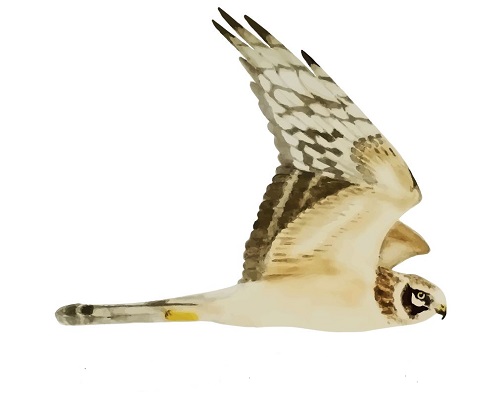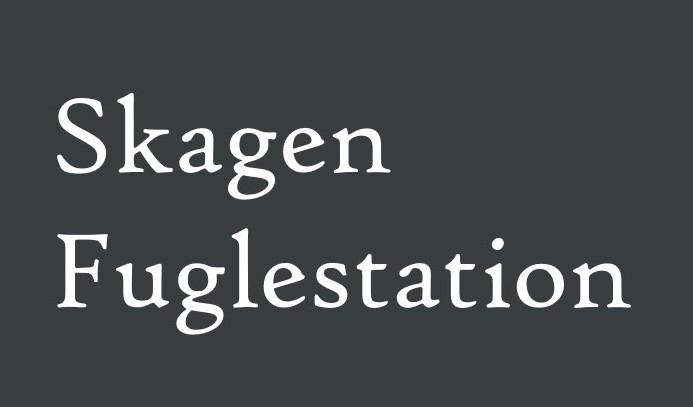Her på Skagen Fuglestations blog bringes korte nyheder i dagbogsformat om hændelser på fuglestationen.
Bluetits and Celebrations
Today will be my last Blog post in Skagen because I am leaving on Monday to continue the rest of my internship in Blåvand. I can’t believe my time here is already over, it didn’t feel like a month at all. Looking back to the day I arrived, I definitely can say I have learned a lot. My time here was really good, full of exciting and interesting experiences. The people I met here were a big part of that, and I am really thankful for all the laughers, shared experiences, and good conversations.
But let’s start with this day. Hayley and I woke up at 6 in the morning, but there was rain about to come, so we waited till 8 to open the nets. At this time, all the others were awake as well, so everyone helped opening the nets and we were really fast. Yesterday evening, Emil, a friend of Simon Jr. arrived and will stay here until tomorrow morning. He joined the ringing, as well as Doro, Joel and Lina. Despite opening the nets quite late, we had a lot of birds today. Over a half of them were Bluetits (Blåmejse), which were getting in the nets as little flocks. So we actually captured 32 Bluetits (Blåmejse)! We were so many people today, that with our combined forces we got them out quickly. Some nice surprises were a recaptured Willow Warbler (Løvsanger), a Common Redstart (Rødstjert) and a Reed Warbler (Rørsanger).
The Migration Count was done in different splits by Knud, Hans and Lina. There were many roosting Gannets (Sule) today, and over a 100 migrating Razorbills (Alk). A Pomarine Skua (Mellemkjove) was seen, and probably the first Snow Bunting (Snespurv) of the autumn season. In general it was a slow day, but there were a lot of people around the dunes, searching for the special bird found yesterday: The putative Eastern Yellow Wagtail, which is still in the area.
There will be stormy weather tomorrow, so we had to take down the tent where we store wooden boxes and a table. Back at the station, the kitchen was almost bursting with all the people, and we had to get more chairs from Hans and Birthe. Leftover food was eaten, a pot of coffee was made and data was entered.
After Lunch, Simon Jr. and Emil tried to get some more faecal samples from the putative Eastern Yellow Wagtail, but sadly they couldn’t get any. Meanwhile, the rest of us went to clean the bikes and put some oil in the chains. A very productive day!

Then, the long awaited session on Skull Ossification was held by Simon Sr., which we all have been looking forward to, since it’s such an interesting topic. By looking on the skull of birds, you can identify the age, depending on if you see the limit between soft and ossificated area or only one of the two. The more ossificated, the older the bird. We took some dead birds out of the freezer and Simon Sr. showed us on those birds where to look for the limit. In the field, you can blow on the head at certain angles and try to see the limit (if it’s there) shining through the skin. As it’s not always good to see, it’s mostly used if you are not sure about the age with only looking at the feathers.

Then of course we still had to celebrate yesterday’s highlight, and especially Hans and Simon Jr., who were the first to spot the putative Eastern Yellow Wagtail! Simon Sr. had bought Champagne and together with delicious cake from downstairs we gathered in the kitchen. Everyone is still very happy which is just really nice to see.

Ringing (Kabeltromlekrattet):
Bluetit (Blåmejse) – 32
Reed Warbler (Rørsanger) – 1
Chiff Chaff (Gransanger) – 3
Black Cap (Munk) – 15
Robin (Rødhals) – 1
Common Redstart (Rødstjert) – 1
Dunnock (Jernspurv) – 1
Common Redpoll (Lille Gråsisken) – 5
Total: 59
People: Antonia Greil, Hayley Land, Rebecca Cheape, Simon Kiesé, Gustav Nyberg, Simon S. Christiansen, Hans and Birthe Christophersen, Knud Pedersen, Lina Kotschi, Dorothea Engert, Joel Münch, Emil.
A link to today's observations from volunteers and local observers.



